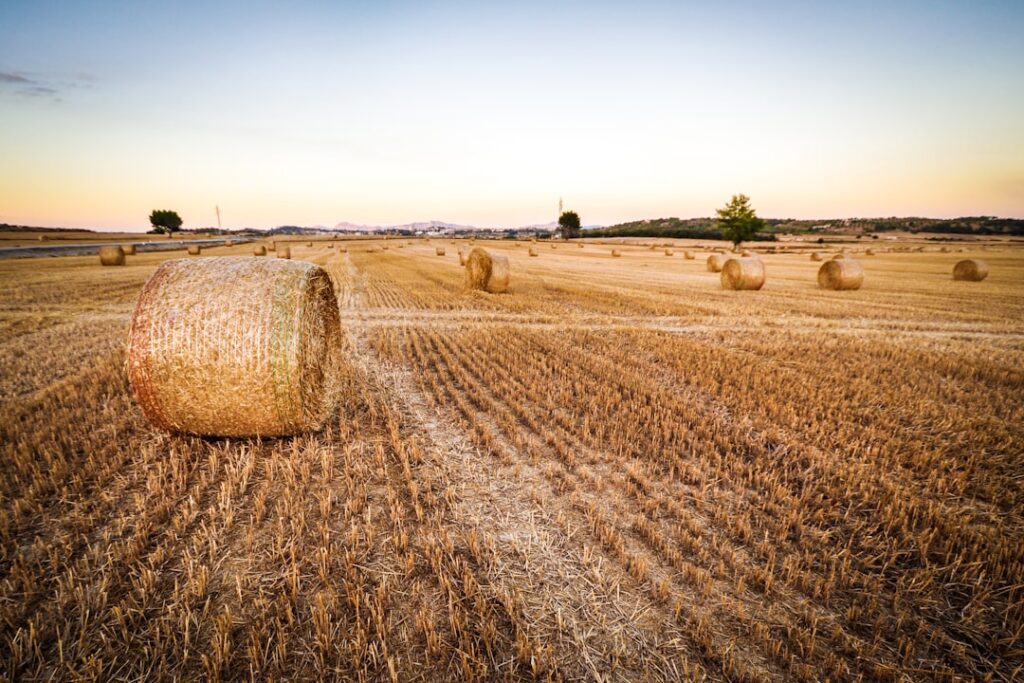AI farming, also known as artificial intelligence farming, is a revolutionary approach to agriculture that utilizes advanced technologies to optimize crop production and improve sustainability. With the world’s population projected to reach 9.7 billion by 2050, the demand for food is expected to increase significantly. AI farming offers a solution to this challenge by leveraging cutting-edge technologies such as machine learning, drones, and precision agriculture to enhance crop yields, reduce resource waste, and minimize environmental impact.
Sustainable farming practices are crucial for the long-term viability of agriculture. Traditional farming methods often rely on excessive use of water, fertilizers, and pesticides, leading to soil degradation, water pollution, and biodiversity loss. AI farming aims to address these issues by promoting precision agriculture techniques that optimize resource usage and minimize waste. By harnessing the power of AI and advanced technologies, farmers can make informed decisions based on real-time data, resulting in more efficient and sustainable farming practices.
How AI Farming is Revolutionizing Crop Production
AI farming is transforming the way crops are grown by enabling farmers to make data-driven decisions and optimize every aspect of crop production. One example of AI farming technology is the use of sensors and drones for crop monitoring. These devices collect data on soil moisture levels, nutrient content, and plant health, allowing farmers to identify potential issues early on and take corrective actions. By continuously monitoring crops, farmers can make precise adjustments to irrigation schedules, fertilizer application rates, and pest control measures, resulting in healthier plants and higher yields.
Another area where AI farming is making a significant impact is precision agriculture. Precision agriculture involves using technology to tailor farming practices to specific field conditions. By analyzing data collected from sensors, satellites, and drones, farmers can create detailed maps of their fields that highlight variations in soil composition, moisture levels, and nutrient content. This information enables farmers to apply inputs such as water, fertilizers, and pesticides only where and when they are needed, reducing waste and minimizing environmental impact.
Precision Agriculture: The Key to Sustainable Farming
Precision agriculture is a farming approach that aims to optimize resource usage and minimize waste by tailoring farming practices to the specific needs of each field. By using advanced technologies such as GPS, sensors, and drones, farmers can collect data on soil conditions, crop health, and weather patterns. This data is then analyzed to create detailed maps that highlight variations in soil composition, moisture levels, and nutrient content.
The benefits of precision agriculture are numerous. By applying inputs such as water, fertilizers, and pesticides only where they are needed, farmers can reduce resource waste and minimize environmental impact. Precision agriculture also enables farmers to identify potential issues early on and take corrective actions, resulting in healthier plants and higher yields. Additionally, by optimizing resource usage, precision agriculture can help reduce production costs and increase profitability for farmers.
AI farming is making precision agriculture more accessible by automating data collection and analysis processes. With the help of AI algorithms, farmers can quickly analyze large amounts of data and make informed decisions in real-time. This not only saves time but also allows farmers to respond promptly to changing field conditions. By integrating AI technologies into precision agriculture practices, farmers can maximize the benefits of this approach and achieve sustainable farming practices more effectively.
AI Farming and the Role of Machine Learning in Crop Monitoring
Machine learning is a subset of AI that involves training computer algorithms to learn from data and make predictions or decisions without being explicitly programmed. In the context of crop monitoring, machine learning algorithms can analyze large datasets collected from sensors, drones, and satellites to identify patterns and make predictions about crop health, yield potential, and pest infestations.
Machine learning plays a crucial role in crop monitoring by enabling farmers to detect potential issues early on and take proactive measures. For example, machine learning algorithms can analyze data on soil moisture levels, temperature, and nutrient content to predict the risk of crop diseases or nutrient deficiencies. By identifying these issues before they become visible to the naked eye, farmers can take corrective actions such as adjusting irrigation schedules or applying targeted fertilizers, resulting in healthier plants and higher yields.
Machine learning algorithms can also be used to develop predictive models that help farmers optimize crop management practices. By analyzing historical data on weather patterns, soil conditions, and crop yields, machine learning algorithms can identify the optimal planting dates, irrigation schedules, and fertilizer application rates for different crops and regions. This information enables farmers to make informed decisions and maximize crop yields while minimizing resource waste.
Smart Irrigation: Optimizing Water Usage with AI Farming
Water scarcity is a significant challenge in agriculture, with irrigation accounting for approximately 70% of global freshwater withdrawals. Traditional irrigation methods often result in excessive water usage, leading to water waste and environmental degradation. Smart irrigation, enabled by AI farming technologies, offers a solution to this issue by optimizing water usage and reducing water waste.
Smart irrigation systems use sensors and AI algorithms to monitor soil moisture levels and weather conditions in real-time. By continuously collecting data on soil moisture levels, these systems can determine when and how much water to apply to crops. This ensures that crops receive the right amount of water at the right time, minimizing water waste and maximizing water use efficiency.
AI farming is making smart irrigation more efficient by integrating data from various sources such as sensors, satellites, and weather forecasts. By analyzing this data using machine learning algorithms, smart irrigation systems can make accurate predictions about future water requirements and adjust irrigation schedules accordingly. This not only saves water but also reduces energy consumption associated with pumping and distributing water.
AI Farming and the Use of Drones for Crop Surveillance

Drones are unmanned aerial vehicles that can be equipped with cameras, sensors, and other devices to collect data on crops and field conditions. In agriculture, drones are being used for crop surveillance, enabling farmers to monitor crop health, detect pest infestations, and identify areas of nutrient deficiencies or water stress.
The use of drones for crop surveillance offers several benefits. Firstly, drones can cover large areas of farmland quickly and efficiently, providing farmers with a comprehensive view of their crops. This allows farmers to identify potential issues early on and take corrective actions promptly. Secondly, drones can collect high-resolution images and data that can be analyzed using AI algorithms to detect subtle changes in crop health or identify specific pests or diseases. This enables farmers to target their interventions more effectively and minimize the use of pesticides or herbicides.
Drones equipped with thermal cameras can also be used to detect variations in crop temperature, which can indicate water stress or nutrient deficiencies. By identifying these issues early on, farmers can adjust irrigation schedules or apply targeted fertilizers, resulting in healthier plants and higher yields.
The Impact of AI Farming on Soil Health and Fertility
Soil health and fertility are critical factors in crop production. Traditional farming practices often lead to soil degradation, erosion, and nutrient depletion, which can reduce crop yields and increase the need for fertilizers. AI farming is playing a significant role in improving soil health and fertility by promoting sustainable farming practices and optimizing resource usage.
One way AI farming is improving soil health is through precision agriculture techniques. By analyzing data collected from sensors, satellites, and drones, farmers can create detailed maps of their fields that highlight variations in soil composition, moisture levels, and nutrient content. This information enables farmers to apply inputs such as fertilizers only where they are needed, reducing the risk of nutrient runoff and minimizing environmental impact.
AI farming technologies are also being used to develop customized soil management plans that optimize soil health and fertility. By analyzing data on soil composition, organic matter content, and nutrient levels, AI algorithms can recommend specific soil amendments or cover crops that can improve soil structure, increase nutrient availability, and enhance water retention capacity. By following these customized soil management plans, farmers can improve soil health and fertility over time, resulting in healthier plants and higher yields.
AI Farming and the Development of Customized Crop Management Plans
AI farming is helping farmers develop customized crop management plans that optimize resource usage and maximize crop yields. By analyzing data on weather patterns, soil conditions, and crop performance, AI algorithms can identify the optimal planting dates, irrigation schedules, and fertilizer application rates for different crops and regions.
Customized crop management plans take into account various factors such as soil composition, moisture levels, nutrient content, and weather conditions to provide farmers with tailored recommendations. For example, if a field has high levels of nitrogen but low levels of phosphorus, the crop management plan may recommend adjusting fertilizer application rates to address this imbalance. Similarly, if weather conditions indicate a high risk of pest infestations, the crop management plan may recommend implementing targeted pest control measures.
By following these customized crop management plans, farmers can optimize resource usage and minimize waste. This not only reduces production costs but also minimizes environmental impact. Additionally, by tailoring farming practices to specific field conditions, farmers can maximize crop yields and profitability.
AI Farming and the Reduction of Pesticide and Herbicide Usage
Pesticides and herbicides are commonly used in agriculture to control pests and weeds that can reduce crop yields. However, excessive use of these chemicals can have detrimental effects on human health and the environment. AI farming is helping reduce the need for pesticides and herbicides by promoting precision agriculture techniques and enabling targeted interventions.
Precision agriculture techniques such as crop monitoring using sensors and drones allow farmers to detect pest infestations or weed growth early on. By identifying these issues before they become widespread, farmers can take targeted interventions such as applying biopesticides or using mechanical weed control methods. This reduces the need for broad-spectrum pesticides or herbicides, minimizing their environmental impact.
AI farming technologies are also being used to develop predictive models that help farmers optimize pest and weed control measures. By analyzing historical data on pest populations, weather conditions, and crop performance, AI algorithms can predict the risk of pest infestations or weed growth and recommend appropriate interventions. This enables farmers to implement preventive measures or targeted interventions at the right time, reducing the need for excessive pesticide or herbicide usage.
The Future of AI Farming: Opportunities and Challenges Ahead
The future of AI farming holds immense opportunities for agriculture. By leveraging advanced technologies such as AI, machine learning, drones, and precision agriculture, farmers can optimize resource usage, maximize crop yields, and minimize environmental impact. AI farming has the potential to revolutionize agriculture by making it more efficient, sustainable, and resilient to climate change.
However, there are also challenges that need to be addressed for the widespread adoption of AI farming. One challenge is the cost of implementing AI farming technologies. While the prices of sensors, drones, and other devices have been decreasing in recent years, they can still be prohibitively expensive for small-scale farmers. Additionally, there is a need for training and capacity building to ensure that farmers can effectively use AI farming technologies and interpret the data they provide.
Another challenge is data privacy and security. AI farming relies on collecting and analyzing large amounts of data, including sensitive information such as field boundaries, crop yields, and soil composition. It is crucial to ensure that this data is protected from unauthorized access or misuse to maintain farmer privacy and prevent potential risks.
To overcome these challenges and fully realize the potential of AI farming, continued research and development in AI technologies are essential. This includes developing more affordable and user-friendly devices, improving data analytics capabilities, and addressing concerns related to data privacy and security. By investing in research and development, policymakers, researchers, and farmers can work together to create a future where AI farming is accessible to all and contributes to a sustainable and resilient agricultural system.
If you’re interested in the fascinating world of AI farming, you might also want to check out this related article on how artificial intelligence is revolutionizing weather forecasting. Severe weather conditions can have a significant impact on agriculture, and AI technology is helping farmers predict and prepare for these events more accurately. To learn more about this exciting development, click here.



